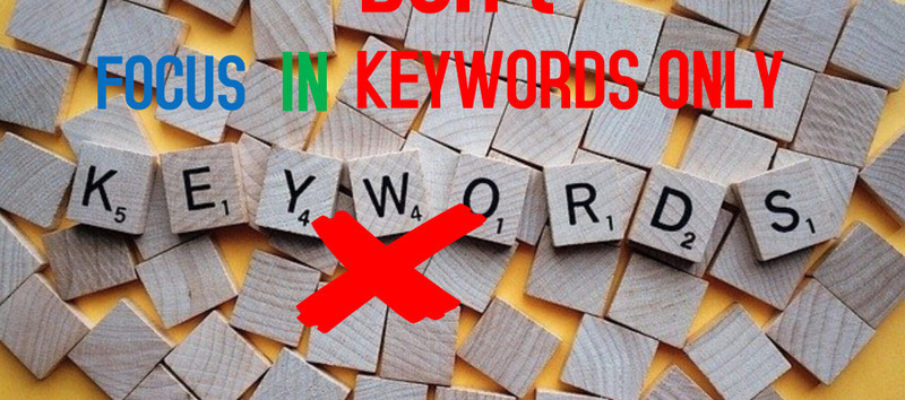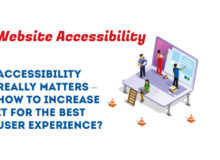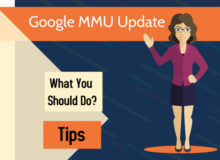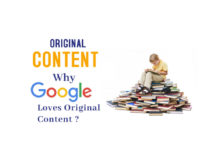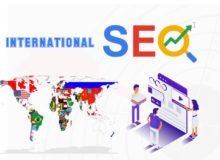A stitch in time saves nine and more when it comes to the death of cookies, search engine marketing, and SEO
If you spend enough time in digital marketing and even focus on just one area, you will eventually get wind of the intersection between SEO, paid media, web design and link building. .
There is no getting around it, because all of these areas ideally create a strong online presence for a company. In this regard, if you’ve ever developed a digital strategy for yourself or your clients, you probably know the types of niche markets that would lead a company to focus more on SEO or paid search marketing.
.
SEO is obviously a fantastic tool for almost anyone, but don’t overlook the power of paid media. Each has its advantages and disadvantages, and if done right, none of them will hurt you.
However, what is going to hurt you is making mistakes in your endeavors and letting them go for a long time. Weaknesses in your SEO and paid media can be tricky things. They can hurt your digital presence in the long run and still be hard to spot if you don’t really know what you are doing.
With the 2021 home stretch fast approaching, now is the best time to fill those gaps in your 2022 search marketing. Here are four tips on how to clean up your SEO and paid media marketing.
-
Stop writing for keywords over topics
SEOs know the old story, but here it is again for those who don’t. Ten to twenty years ago it was common to enter keywords on web pages. It simply meant misusing a particular keyword on a page to get Google to rank the page higher.
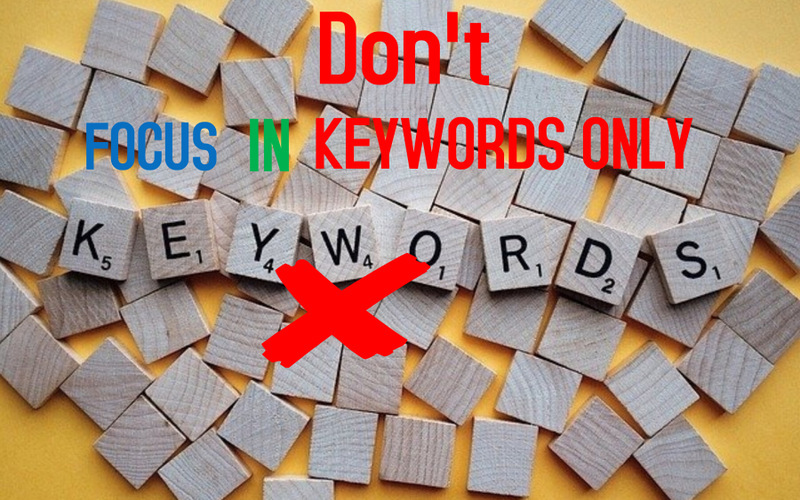
In 2021, we know this is bad practice as it doesn’t help users answer their questions. What answers users’ questions online today is content that deals with popular topics, not just keyword spam.
You can use popular topic research tools like BuzzSumo, Answer the Public, or Semrush to find topics that are relevant to your industry niche.
Then do your own research to generate useful content. Always think of the user first. However, keywords still have their place. Google needs to match searches against content, and content that enables the smartest, most useful, and natural use of keywords will usually perform better.
The content should have keywords in its headers and should of course also be used in the body. But don’t think that you need to overuse keywords or focus your content entirely on keywords. Instead, find out the intent of the keywords and align them with your topic research to create content that kills and ranks.
2. Don’t abandon the consistency of paid media messages
If your search marketing includes paid media, you need to follow completely different guidelines. Again, everything you do should be thought of for the user. Put yourself in their shoes. How would you react to this ad if you saw it?
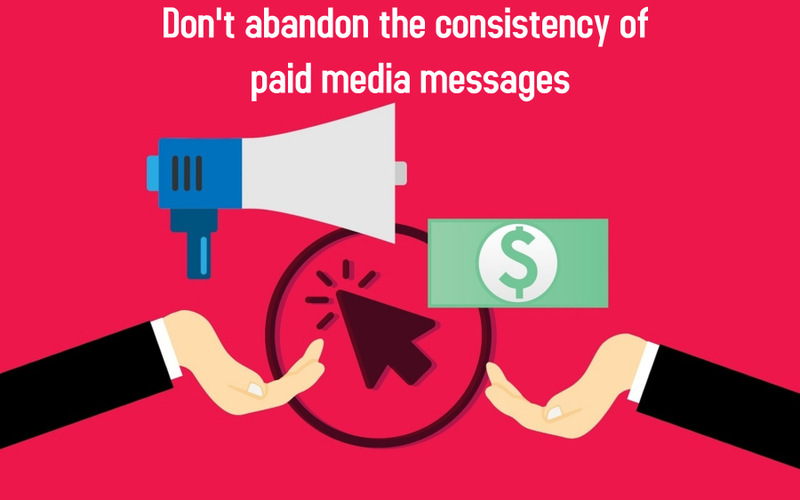
Then click on the landing page to make sure it all still makes sense. The point is, this is where PPC specialists can fail if they’re not careful.With paid media, you use ads to get people to do things. That’s what you have: words and images in square classifieds on websites or paid search results on SERPs.
This shows the continuity of your paid campaigns. Without this continuity, with no landing pages pointing to offers or claims in ads, users get confused. You will wonder if you clicked the wrong ad or were redirected to the wrong website.
And confused users don’t spend money. Think of it this way: It is estimated that it takes between five and seven impressions for a user to remember a brand. Five to seven!
Reaching these numbers can be quite difficult, but imagine trying to get there with no brand consistency. They would prepare for failure, right away.Again, the solution is to think like a user.
Go through everything on a paid searcher’s journey. If the message flow and branding are sensible and meaningful, you may have a successful campaign in hand.
3. Don’t ignore the site’s bad UX
I said at the beginning that the different areas of digital marketing all have the potential to overlap and articulate one another. This is where SEO and website design meet: Website UX.
SEOs can spend all day researching keywords, writing content, tweaking meta tags, and building backlinks, but users likely won’t do what they want if your website has a layout and a terrible design, all too are silent if it is not optimized. for the mobile experience.
But don’t just listen to me – read the numbers. According to Intechnic, 67% of online users say that a poorly designed website negatively impacts their impression of a brand. That’s a huge number to say the least. When Google’s spiders crawl a website, they logically do so, just like a human would.
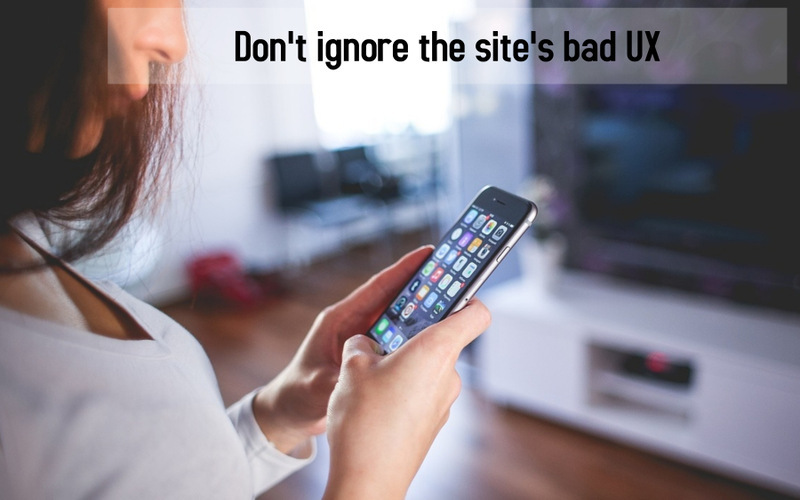
This means that the primary navigation should define the content of your website and clearly indicate where users can find certain information. Now what is a “good” layout? It’s easy when you think about it, and yet so many websites struggle with it.
The primary navigation should show users all the important areas of a site. Regardless of your activity, your navigation should show your top services first, followed by a blog if you (should) have one, an “About Us” section, and a Contact Us tab.
This setup covers all of the key points you need to keep users engaged. Now it’s up to you how everything else collapses, but stay logical here as well.
Your Main Services tab should have a submenu with all of your main services, your Locations tab can be broken down to show your various business locations, and so on. Also, when you talk about website UX today, accessibility must not be forgotten.
Accessibility is, of course, the ability of website content to be consumed and understood by people with various physical or mental disabilities. Not only is this good business practice, it is inclusive and courteous.
Website accessibility includes considerations such as serving content for the visually and hearing impaired, making sure your web pages can only be navigated with a keyboard rather than a simple mouse, and choosing colors that do not collide so that color blind people can easily read your content can content.
It makes sense doesn’t it? It’s important to make sense of this because if neither human users nor Google can figure out how to navigate your website, you are unlikely to be ranking for the keywords you want.
4. Put and forget about the PPC
If you’re a business owner doing your own digital marketing or hiring a (possibly revamped) specialist to do it, it can be more than tempting to indulge in the “set it and forget it” mentality.
Small and medium-sized businesses have so much to manage themselves that putting enough effort into digital marketing can seem like an exaggeration.You might think that you have developed a pretty effective PPC advertising campaign that has the right graphics and messages and that reaches all of the right audiences.
And maybe you have it for now. But you can’t define and forget anything in PPC or in digital marketing in general. Trends change, markets change, consumers change. You should check your ad performance over time to see if you’ve been broke lately.
Because when it does, you are wasting a lot of effort maintaining ads that don’t convert. Instead of leaving it that way, spend some time analyzing the performance of your ads, especially in the time immediately after the campaign starts.
You want to make sure things go as you planned and change them when they don’t. While you’re at it, take some time to research how you can optimize the resource consumption of your PPC campaigns. The best campaigns are of course the best performing.
So how can we do better? Try to revise your ad text. It sounds simple, but as you know, more relevant ad text increases click-through rates and quality ratings. And high-quality scores reduce your cost-per-click and your cost-per-conversion.
Another inexpensive way to optimize the effectiveness of your ads is to use daily mailing and geolocation together. Dayparting plans to show your ads at certain times of the day, while geolocation only shows your ads in certain locations.
This is especially useful for local businesses that have physical locations and want to attract customers. It takes a lot of audience research to get it right, but it’s a smart and sensible way to optimize the resources you put into your PPC ads.
An outdated PPC campaign has the potential to become one of your biggest search engine marketing gaps in 2022, so don’t wait for this one.Get started on your corrections for 2022 nowThere really is no better time to fix your search engine marketing flaws. Any mistake made for a while is likely to hurt you. But with the second half of 2021 already here, many companies are looking to 2022.

